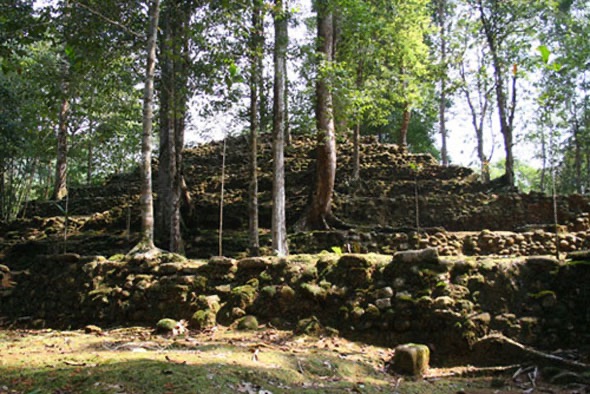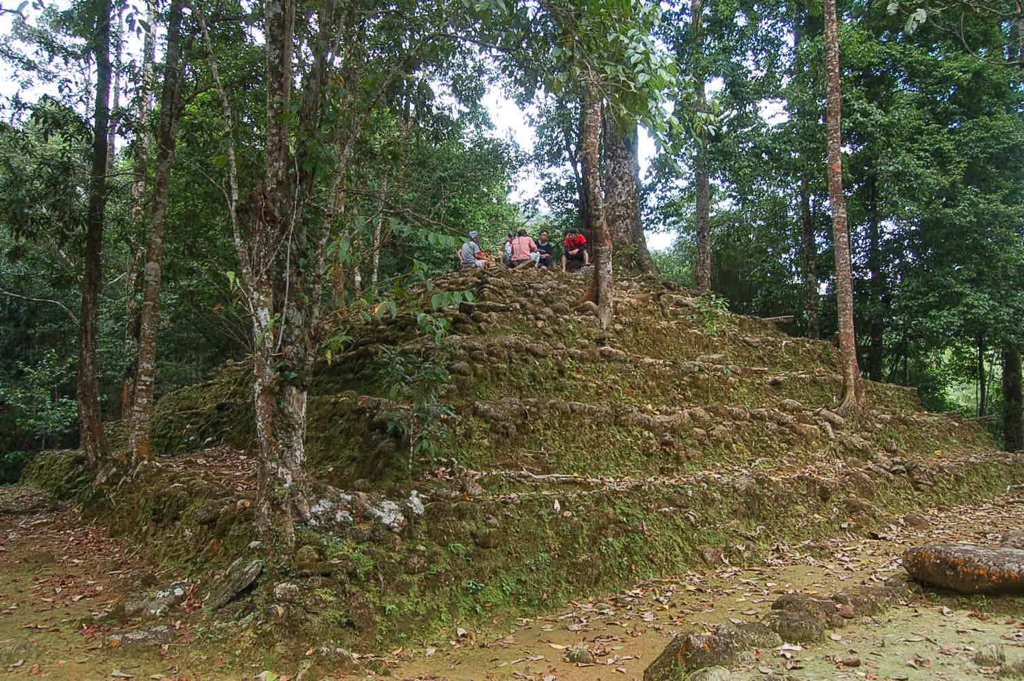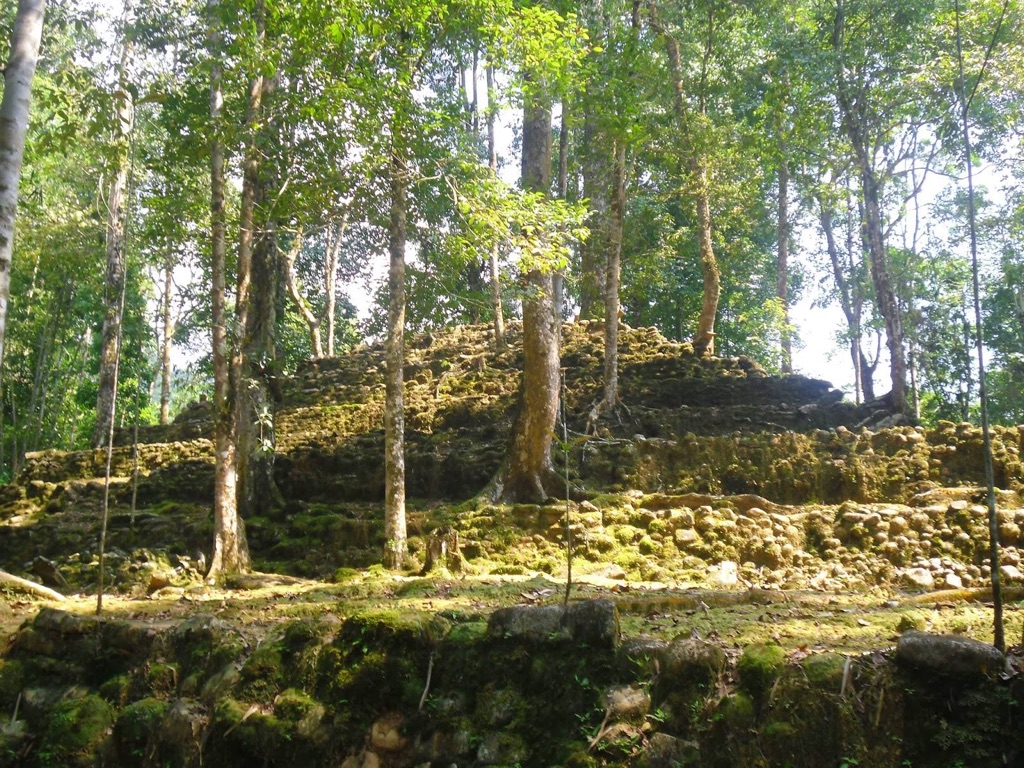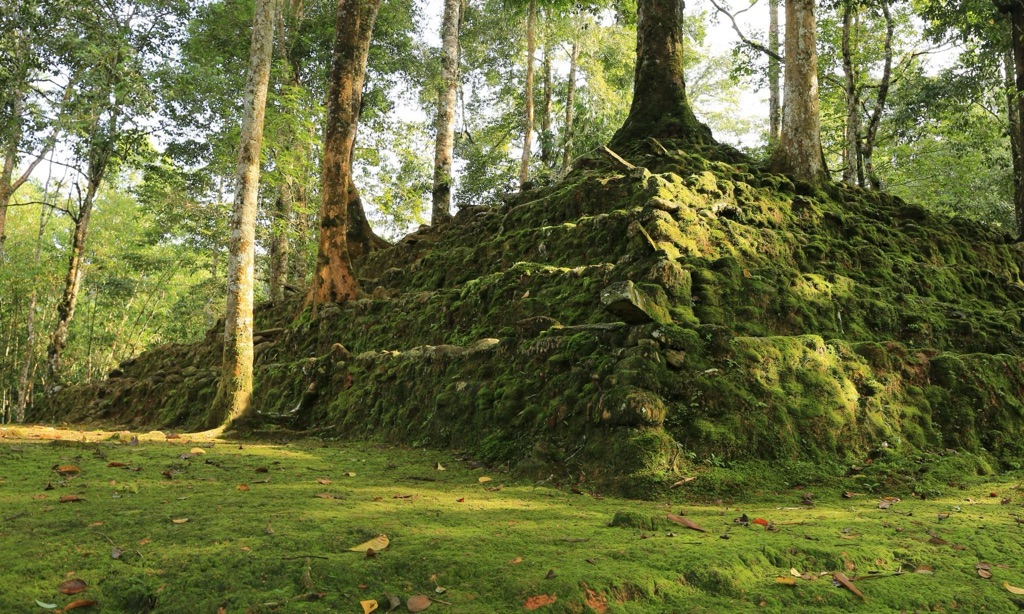The Lebak Cibedug Pyramid, located in Indonesia, is a mysterious and relatively unknown megalithic site. It has sparked interest and debate among archaeologists and enthusiasts alike. The site consists of a series of terraces carved into a hill, resembling a step pyramid. Its origins and purpose remain a subject of speculation, as it does not fit neatly into the known history of the region.
Get your dose of History via Email
Historical Background of Lebak Cibedug Pyramid
The Lebak Cibedug Pyramid was discovered in the Lebak Regency in Banten Province, Indonesia. Local farmers first noticed the terraces, and the site gained attention in 2015. It is not clear who built the pyramid or for what purpose. The structure’s design does not match typical Indonesian architecture. This has led to various theories about its origins, including the possibility of it being older than the Hindu-Buddhist influences in the region.
There is no concrete evidence to suggest who might have inhabited the site after its construction. However, the pyramid’s design suggests it could have served a significant purpose, possibly ceremonial or astronomical. The site has not been linked to any historically important events as of yet. Its discovery is still recent, and much of its history remains to be uncovered.

The construction of the Lebak Cibedug Pyramid is an enigma. It predates the spread of Islam in the region, and its style does not align with the known pre-Islamic cultures of Indonesia. This has led to speculation that it could be a remnant of a lost civilization or culture. The lack of historical records makes it difficult to determine the pyramid’s builders or their intentions.
Archaeological work at the site is ongoing, and researchers are attempting to piece together its history. The pyramid’s terraces are well-preserved, suggesting that it was either maintained over the centuries or abandoned and forgotten, allowing it to remain hidden from the destructive forces of nature and human activity.
The Lebak Cibedug Pyramid’s discovery has not yet led to a significant historical reevaluation. However, it has the potential to reshape our understanding of the region’s prehistory. As research continues, the site may reveal insights into the people who built it and their place in Indonesia’s rich tapestry of history.
About Lebak Cibedug Pyramid
The Lebak Cibedug Pyramid is a terraced structure carved into the side of a hill in Indonesia. Its exact dimensions are not well-documented, but it is significant in size and scope. The pyramid’s terraces are arranged in a pattern that suggests a step pyramid, a design that is not typical in Indonesian architecture.

The construction methods and building materials of the pyramid are still under investigation. The terraces appear to be made of earth and stone, and there is evidence of sophisticated engineering. The site’s layout indicates a high level of planning and knowledge of construction techniques.
One of the most striking features of the Lebak Cibedug Pyramid is its alignment. Some researchers suggest that the terraces are aligned with astronomical events, such as solstices or equinoxes. This could indicate that the site had a ceremonial or calendrical function, although this is still a theory.
The architectural highlights of the pyramid are its terraces and the precision with which they were constructed. The terraces create a series of steps that lead up the hillside, and their uniformity suggests a deliberate design. The site’s overall layout is harmonious with the natural landscape, indicating a sophisticated understanding of the environment.
Despite its apparent age, the Lebak Cibedug Pyramid is in relatively good condition. This could be due to the materials used in its construction or the site’s location, which may have protected it from the elements. The pyramid’s preservation allows for detailed study and could provide valuable insights into its construction methods.
Theories and Interpretations
Several theories have been proposed about the Lebak Cibedug Pyramid’s purpose and origins. Some suggest it was a site of religious or ceremonial significance, possibly related to ancient astronomical practices. The alignment of the terraces with celestial events supports this theory.

Others believe the pyramid could have been a social or political center for a prehistoric community. Its imposing structure may have served as a symbol of power or unity. However, without definitive evidence, this remains speculative.
The mystery of the pyramid is compounded by the lack of historical records. There are no known texts or artifacts that directly reference the site. This has led to a reliance on interpretation and comparison with other archaeological sites for clues about its use.
Dating the Lebak Cibedug Pyramid has been challenging. The methods used so far include comparative analysis of soil layers and examination of tool marks on the stones. These techniques have provided some information, but the results are not conclusive.
The site continues to be a focus of research and debate. As more evidence is uncovered, the theories and interpretations of the Lebak Cibedug Pyramid may evolve. For now, it remains one of Indonesia’s most intriguing archaeological enigmas.
At a glance
Country: Indonesia
Civilization: Unknown
Age: Undetermined, Pre-Islamic era
Conclusion and Sources
Reputable sources used in the creation of this article include:
- Wikipedia: https://en.wikipedia.org/wiki/Lebak_Cibedug

